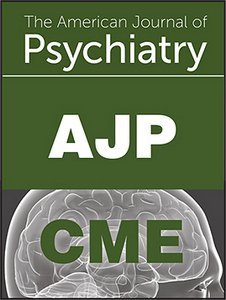Systemic Inflammation and Anhedonic Responses to an Inflammatory Challenge in Adults With Major Depressive Disorder: A Randomized Controlled Trial.
IF 15.1
1区 医学
Q1 PSYCHIATRY
引用次数: 0
Abstract
OBJECTIVE The authors sought to determine whether an inflammatory challenge with lipopolysaccharide (LPS) differentially impacts symptoms of anhedonia in participants with major depressive disorder with high (≥3 mg/L) and low (≤1.5 mg/L) serum C-reactive protein (CRP) concentrations. METHODS Sixty-eight participants with major depressive disorder were randomly assigned, in a 1:1 ratio, to receive LPS (0.8 ng/kg body weight) or placebo (saline) in a parallel-group double-blind design. Participants were stratified according to baseline CRP concentrations, yielding four groups: high-CRP LPS (N=13), low-CRP LPS (N=19), high-CRP placebo (N=13), and low-CRP placebo (N=19). Blood was sampled at baseline, at 1, 1.5, 3.5, 6, and 24 hours, and 1 week after LPS or saline administration, with concurrent assessment of psychological outcomes. The primary outcome measure was the Snaith-Hamilton Pleasure Scale (SHAPS), and the primary contrast of interest was the change between baseline and 1.5 hours (peak of the inflammatory response) in the high-CRP versus low-CRP groups receiving LPS. Secondary outcomes included the Montgomery-Åsberg Depression Rating Scale (MADRS) and serum levels of three cytokines: interleukin-6 (IL-6), IL-10, and tumor necrosis factor (TNF). Data were analyzed with linear mixed models. RESULTS Significantly greater increases in self-reported anhedonia (on the SHAPS) and IL-6 levels were observed between baseline and 1.5 hours in the high-CRP versus low-CRP LPS groups. There were no significant differences for TNF and IL-10. The MADRS was not administered at 1.5 hours; secondary analyses showed a significant group-by-condition-by-time interaction driven by a greater decrease in MADRS scores between baseline and 24 hours in the high-CRP group. CONCLUSIONS Depressed individuals with systemic inflammation appeared to be biologically primed to respond more strongly to inflammatory stimuli, and psychologically, this sensitization impacted the symptom of anhedonia, the primary outcome.成人重度抑郁障碍的系统性炎症和对炎症挑战的快感缺乏反应:一项随机对照试验。
目的:作者试图确定脂多糖(LPS)炎症刺激对血清c -反应蛋白(CRP)浓度高(≥3mg /L)和低(≤1.5 mg/L)重度抑郁症患者快感缺乏症状的影响是否存在差异。方法采用双盲设计,68例重度抑郁症患者按1:1的比例随机分为LPS组(0.8 ng/kg体重)和安慰剂组(生理盐水组)。根据基线CRP浓度将参与者分层,分为四组:高CRP LPS组(N=13)、低CRP LPS组(N=19)、高CRP安慰剂组(N=13)和低CRP安慰剂组(N=19)。在LPS或生理盐水给药后1周、1小时、1.5小时、3.5小时、6小时和24小时采集血液,同时评估心理结果。主要结果测量是snath - hamilton快乐量表(SHAPS),主要对比是接受LPS的高crp组与低crp组的基线和1.5小时(炎症反应峰值)之间的变化。次要结果包括Montgomery-Åsberg抑郁评定量表(MADRS)和血清三种细胞因子水平:白细胞介素-6 (IL-6)、IL-10和肿瘤坏死因子(TNF)。数据采用线性混合模型进行分析。结果:与低crp LPS组相比,高crp组自我报告的快感缺乏症(SHAPS)和IL-6水平在基线和1.5小时之间显著增加。TNF和IL-10无显著差异。1.5小时不给MADRS;二次分析显示,在基线和24小时之间,高crp组的MADRS评分下降幅度更大,这导致了显著的组-条件-时间相互作用。结论:患有全身性炎症的抑郁个体似乎在生物学上对炎症刺激的反应更强烈,在心理上,这种敏感性影响了主要结局快感缺乏的症状。
本文章由计算机程序翻译,如有差异,请以英文原文为准。
求助全文
约1分钟内获得全文
求助全文
来源期刊

American Journal of Psychiatry
医学-精神病学
CiteScore
22.30
自引率
2.80%
发文量
157
审稿时长
4-8 weeks
期刊介绍:
The American Journal of Psychiatry, dedicated to keeping psychiatry vibrant and relevant, publishes the latest advances in the diagnosis and treatment of mental illness. The journal covers the full spectrum of issues related to mental health diagnoses and treatment, presenting original articles on new developments in diagnosis, treatment, neuroscience, and patient populations.
 求助内容:
求助内容: 应助结果提醒方式:
应助结果提醒方式:


